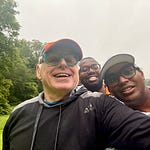Much of the United States today owes its culture to England, where the first clubs that we recognize as ours were founded. The writer Russell Kirk remarked that “So dominant has British culture been in America, north of the Rio Grande, from the seventeenth century to the present, that if somehow the British elements could be eliminated from all the cultural patterns of the United States—why, Americans would be left with no coherent culture in public or in private life.”
Having spent time on both sides of the pond, here are some key distinctions and commonalities.
There are many, many more city clubs, occasionally with athletic facilities, in England than there are in the United States, which has more country clubs. And England just has a higher concentration of clubs: for example, London itself has around 130 clubs, whereas New York City, which has around 30. Both have comparable populations.
Perhaps the most important distinction between American and English clubland is the lack of a titled gentry and nobility in the United States.
While British clubland is similarly diverse today, for much of its history, well-heeled gentlemen would rub shoulders with the landed gentry and aristocracy, making clubs middle grounds for closed-door sociability and interactions that cut across entrenched class divides.
On the other hand, the absence of a titled gentry and nobility in the United States means that one’s own status is granted more through personal endeavors, sociability, and involvement, and with familial connections.
American clubland embraces individuality within a strong community, whilst British clubland used to be more inclined to uphold longstanding social status, which one was born into.
The second distinction is visual and aesthetic. British clubs tend to be more formal in their dress codes.
The Carlton Club in London, for example, demands that its members and guests be formally attired in clothing explicitly bereft of logos.
“Within the ‘public’ areas of the clubhouse,” the dress code reads, “gentlemen are expected to wear a tailored jacket and formal trousers together with a collared shirt and tie (no cravats).” In other words: a suit. No chinos permitted, which would make even the most formal of American clubs, which may mandate a sports coat and a tie, but with chinos, squirm.
This culture of formality pervades much of British clubland: of the interactions, the seriousness with which everything is conducted, and the way you hold yourself.
Many British clubs maintain, even today, a roster of bachelors who live at their club before they are in serious romantic involvements. While this was true of American clubs in the past, in the last few decades such communal living arrangements have fallen out of fashion, with the exception of summer memberships and housing at clubs like the University Club of New York City, which provides rooms and a special summer membership.
One remarkable distinction is the cost of membership in British clubs, which is almost always lower than in the United States. Dues for city clubs and athletic clubs in large metropolitan cities in the United States begin at a few thousand dollars a year for young members, but, for instance, the Sloane Club in London has dues for younger members coming in at just over a thousand dollars per annum. The drinks are also considerably cheaper, and, frankly, looking at my club bills, I would much rather be across the pond.
Last, but not the least, some British clubs have gained iconic status for their fashion and stylistic sensibilities. For instance, at the heart of the Sloane Rangers phenomenon was the Sloane Square in Chelsea, and the Sloane Club. The Sloane Rangers, a group of similarly-dressed-and-styled young men and women from the upper and upper-middle-class, was the cutting edge of fashion and sociability, much like their clubby counterparts from the 1920s, called the Bright Young Things.
I’m still waiting for such a phenomenon to arise in the United States.





